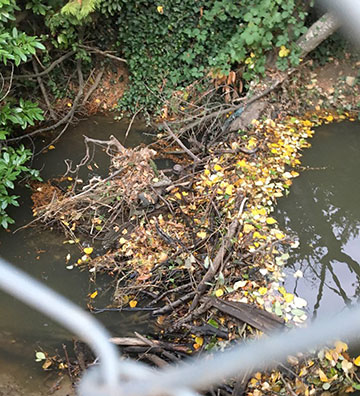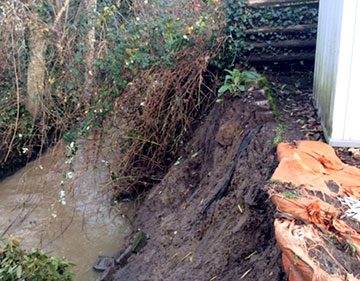 |
Previous Issues |
| Cedar Mill Community Website |
|
Search the Cedar Mill News: |
About The Cedar Mill News |
|
|||||||
| Volume 15, Issue 12 | December 2017 |
||||||
Multi-agency effort to address Cedar Mill, Johnson Creek flooding
|
||||||||
 |
| Beaver dams may be natural, but they don't help with flooding issues! |
The project, which is expected to issue recommendations by summer 2018, is starting with a survey of those who live in the watershed, particularly those who have been affected by flooding in the past 10 years. The survey and project timeline can be accessed at www.cedarmillcreek.org.
Cedar Mill Creek and its tributaries, including North Johnson Creek, drain 5,300 acres from the Tualatin Hills, passing through neighborhoods and parks, around businesses and under roadways, and then join together at the intersection of Walker Road and Murray Boulevard in Beaverton. That area, south of Highway 26, has experienced the most flooding in recent years. Cedar Mill Creek then runs through the Nike campus to join Beaverton Creek in the Tualatin Hills Nature Park, and then the stream eventually join Rock Creek, which drains into the Tualatin River.
On its website, the Collaborative points to 200 years of human impact as the root of the flooding. From the trapping of beavers and removal of beaver dams, logging of the forests and “channelizing” the streams for farming, on to today’s hillside development and roads with their impermeable surfaces—all have led to less land to slow and absorb rain water.
When the storms come, the water pours off the asphalt and concrete in the hills into streambeds that widen to accept the torrent that eventually tears at lower-lying areas like Fletcher’s neighborhood. Apart from the flood of winter 1996, the worst flooding has been in the past five years, she said, adding that dealing with the creek is a bigger job than she and her neighbors can handle.
 |
| The bank in Lisa Fletcher's yard has been collapsing for several years. Sandbags aren't preventing the erosion, which threatens her garden shed. |
Homeowners and property owners on the creeks are expected to care for the stream and riparian zones that run through their property. Clean Water Services, which manages stormwater drainage and treatment of the wastewater in the Tualatin River watershed, is the agency property owners can turn to for questions about stream care and flooding. It has published streamside care tips to educate property owners on planting and protecting streambanks, and provides a phone number to call in flood events.
As the existence of the Collaborative makes clear, however, efforts to address the flooding haven’t paid off. Gov. Kate Brown, in approving county supervisors’ request to include the Collaborative as an Oregon Solutions project, expressed hope that this time with “all the necessary stakeholders working together … there would be positive results.”
Next steps include gathering more survey information (photos are also requested) and public input through spring 2018. The project team will take into consideration the input, existing regulations, and funding before developing a roadmap and “declaration of cooperation” that will be signed in summer 2018.
NOTE: The December 12 CPO1 meeting will include a panel of experts to provide solutions to homeowners dealing with this winter’s flooding problems, as we anticipate the longer-term remedies that the Collaborative will provide. See Community News for details.
![]()
Like us on Facebook for timely updates
Published monthly by Pioneer Marketing & Design
Publisher/Editor:Virginia Bruce
info@cedarmillnews.com
PO Box 91061
Portland, Oregon 97291
© 2013